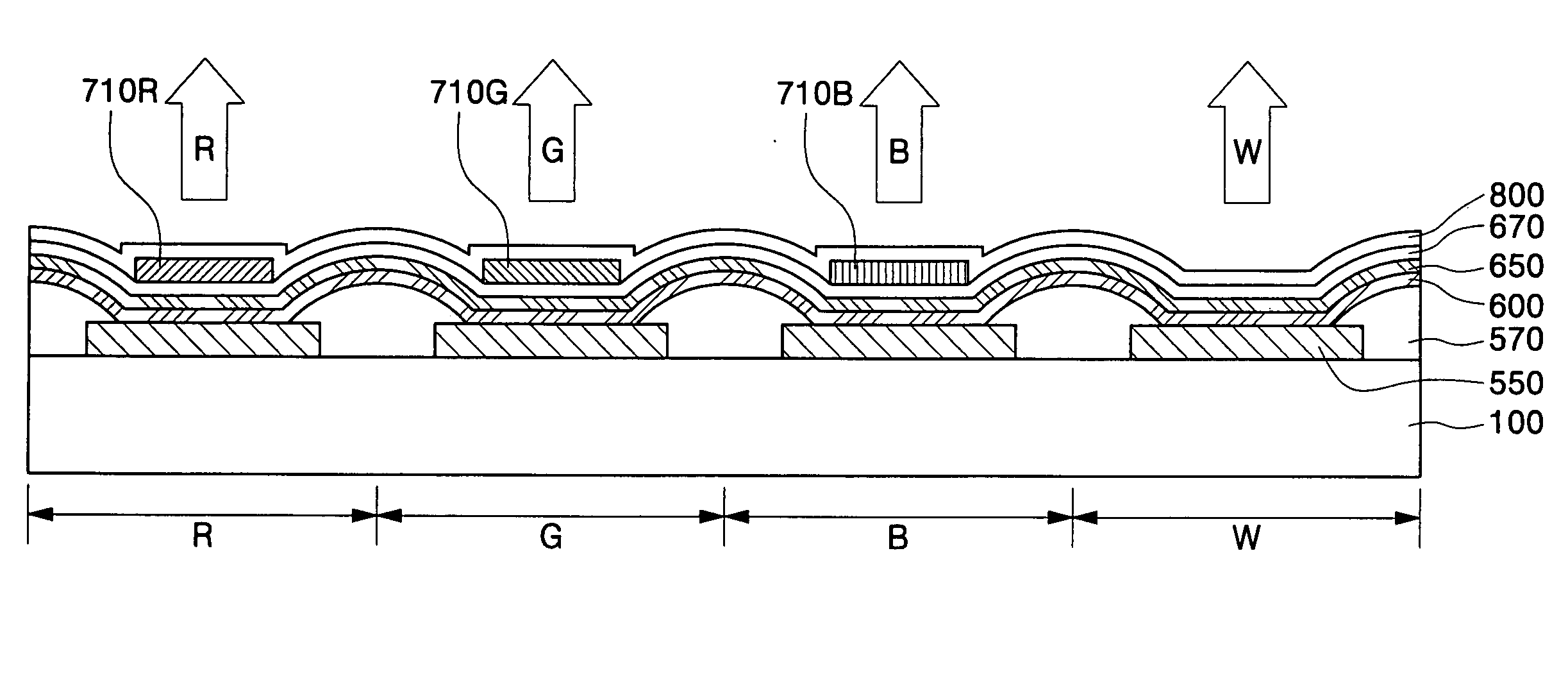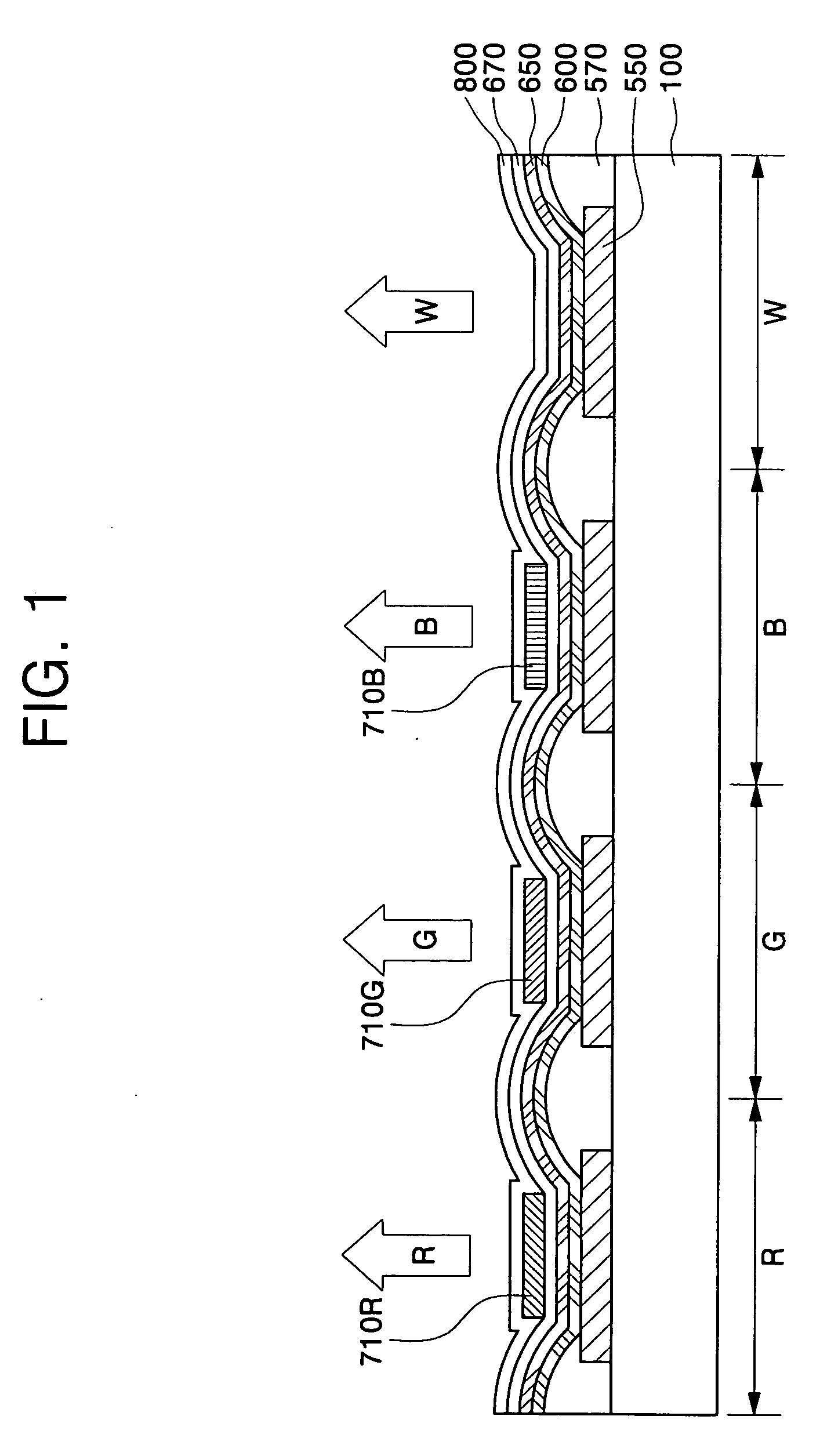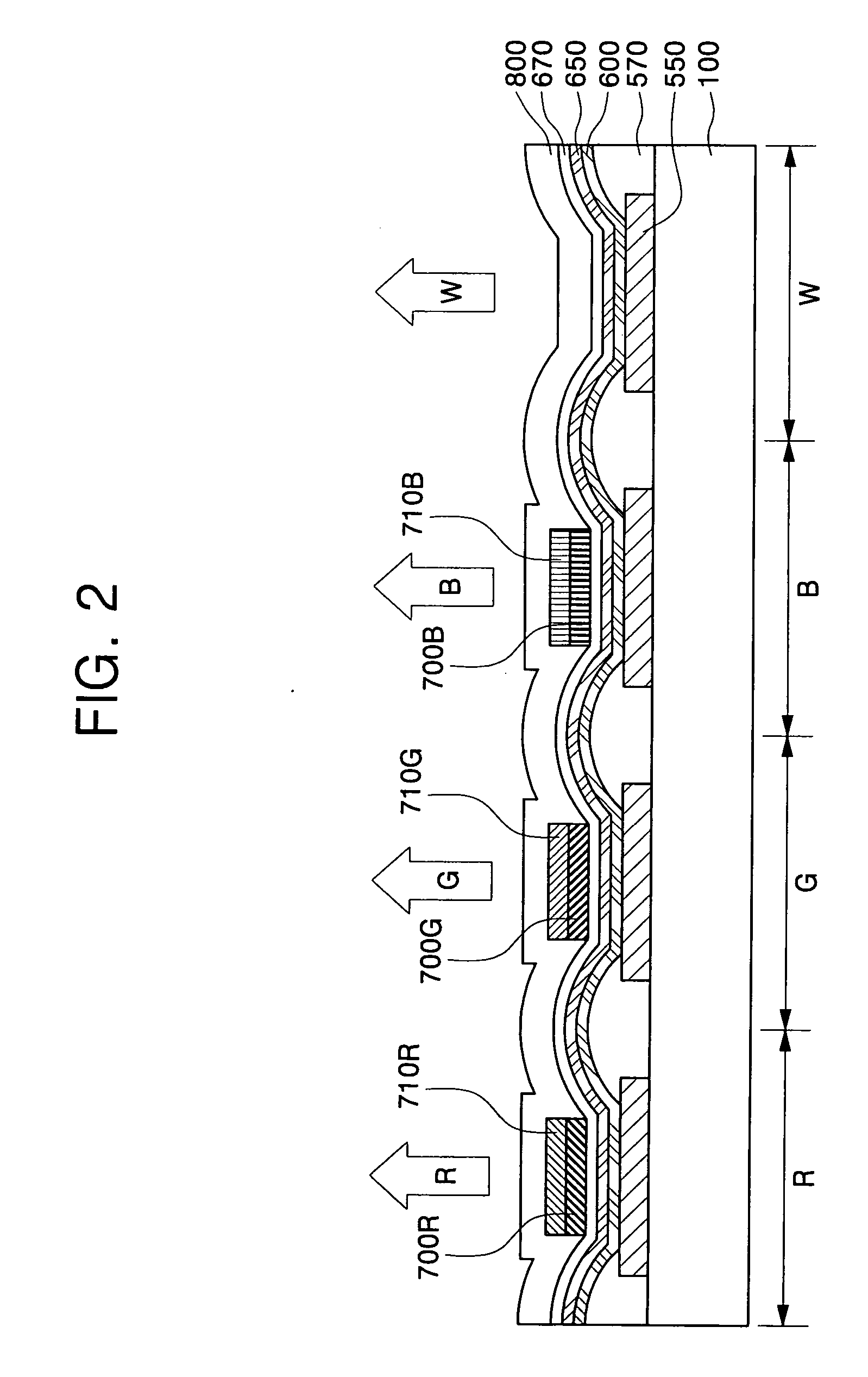Full color organic light-emtting device having color modulation layer
a technology of organic light-emitting devices and color modulation layers, which is applied in the direction of organic semiconductor devices, discharge tubes/lamp details, discharge tubes luminescnet screens, etc., can solve the problems of difficult white balance, cf previously formed may be contaminated, and the process of forming cf by photolithography has a disadvantage of requiring many processes and more time to fabricate oled, so as to reduce the time of fabrication and maintain white balance. , the effect o
- Summary
- Abstract
- Description
- Claims
- Application Information
AI Technical Summary
Benefits of technology
Problems solved by technology
Method used
Image
Examples
experimental example
[EXPERIMENTAL EXAMPLE]
[0092] Material for the CF (manufactured by 3M Co.) was deposited on a donor film (manufactured by 3M Co.) to form a transfer layer, while preparing a substrate. The donor film was arranged to make the transfer layer face the substrate and was irradiated by an Nd-YAG laser, so that the transfer layer was transferred onto the substrate. In the transfer process, the laser power was 10 W, and the scanning speed of the laser was 7 m / sec. This process was repeated for each of red, green and blue colors, so that patterns for the red, green and blue CFs were formed on the substrate. Anode patterns were then formed on the CF patterns, respectively, and an emission layer emitting white color light was formed on the anodes. Cathodes were then formed on the emission layer, so that a full color OLED was fabricated.
PUM
 Login to View More
Login to View More Abstract
Description
Claims
Application Information
 Login to View More
Login to View More - R&D
- Intellectual Property
- Life Sciences
- Materials
- Tech Scout
- Unparalleled Data Quality
- Higher Quality Content
- 60% Fewer Hallucinations
Browse by: Latest US Patents, China's latest patents, Technical Efficacy Thesaurus, Application Domain, Technology Topic, Popular Technical Reports.
© 2025 PatSnap. All rights reserved.Legal|Privacy policy|Modern Slavery Act Transparency Statement|Sitemap|About US| Contact US: help@patsnap.com



